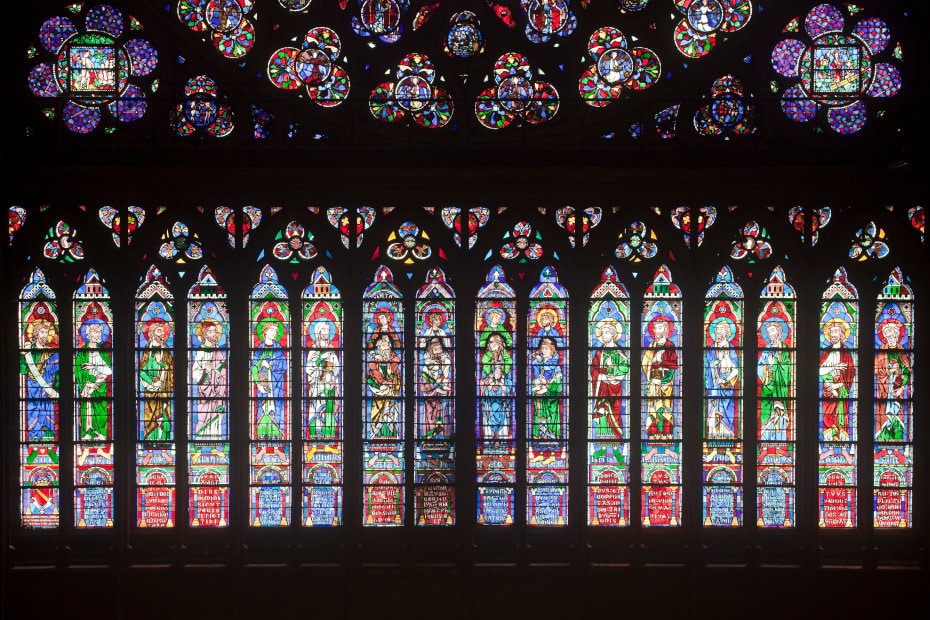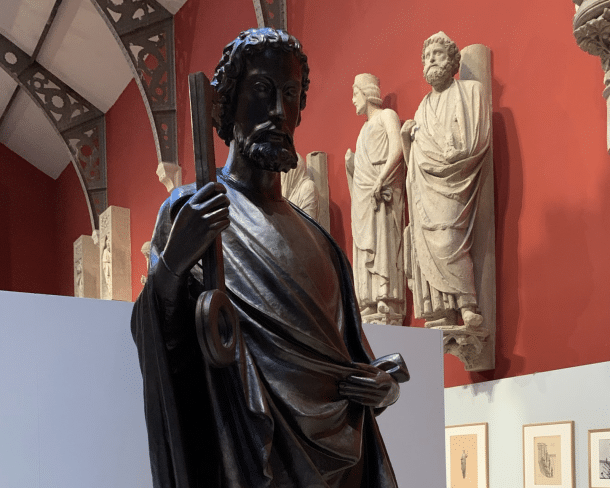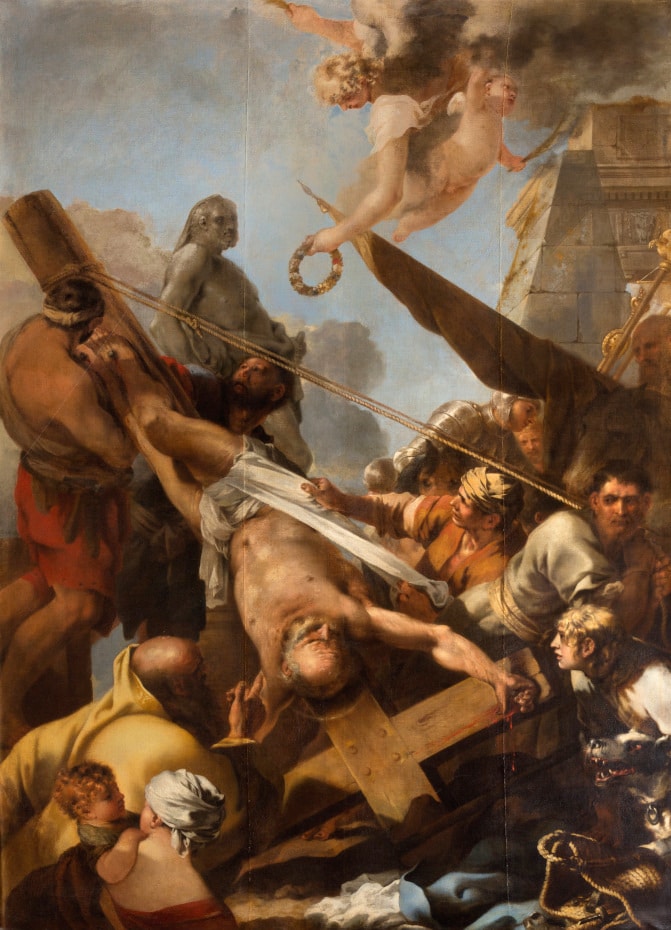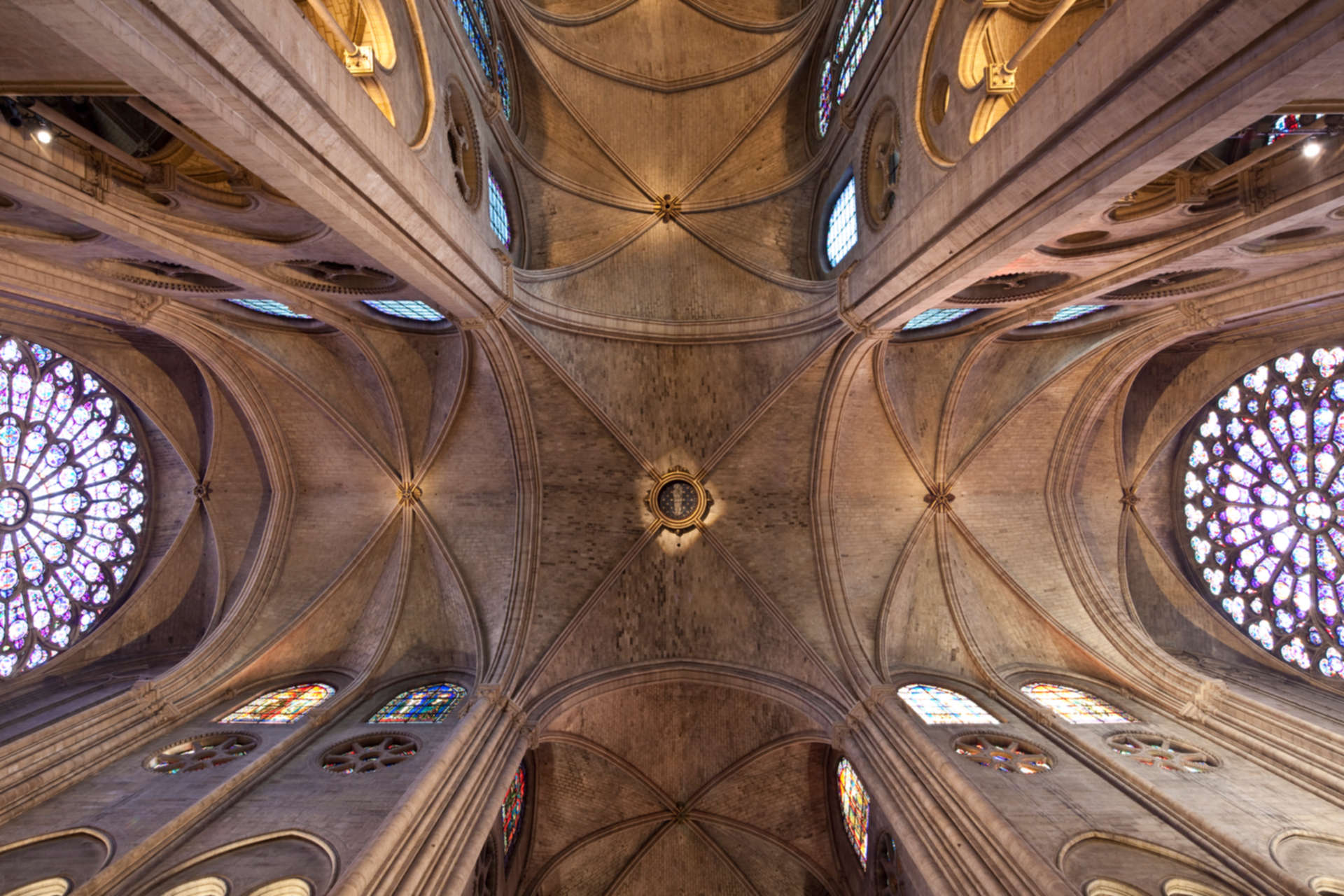Gothic architecture is designed to bathe the interior of the building in light. In Notre-Dame Cathedral’s first iteration, in the 12th century, the building rose on four levels: large arches, galleries, stained-glass rose windows and high windows. These stained-glass windows are still visible on the first bay and at the junction between the transept and the choir.
The addition of chapels around the nave in the 13th century darkened the interior of the cathedral. To accentuate the entry of light into the building, the high windows were enlarged in the 13th century. Since then, the cathedral has only stood on three levels.
Notre-Dame Cathedral’s stained-glass windows are among the masterpieces of Gothic art. They cover almost a thousand square meters of surface (almost 1100 square feet). The imagery painted in the windows depicts religious scenes and stories. This is because in the Middle Ages, ecclesiastical art was primarily didactic, meant to explain the Scriptures and the glorification of the church and its saints.



